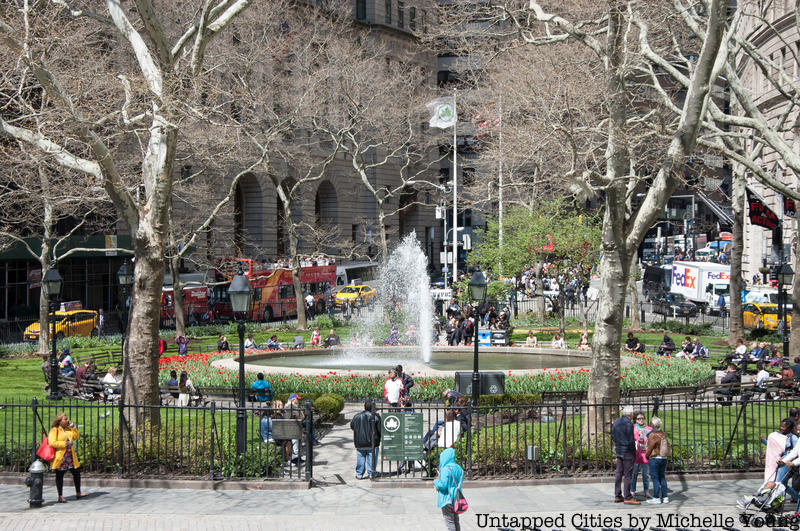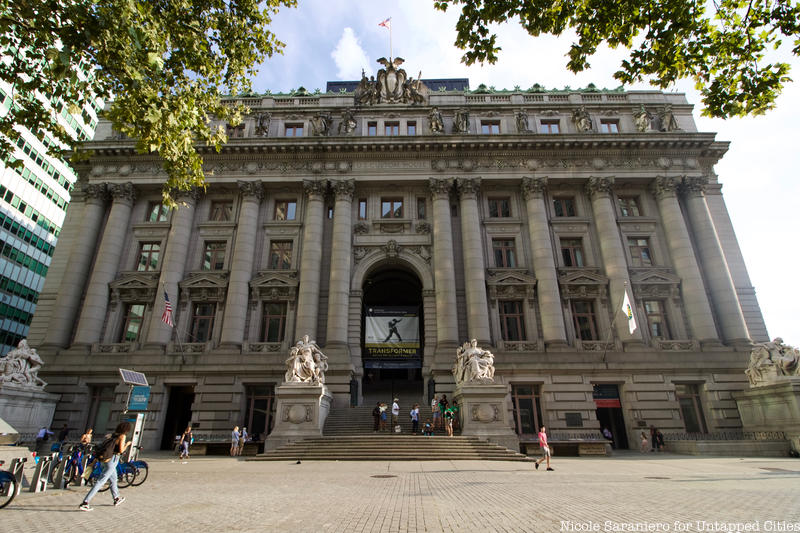3. Bowling Green

Bowling Green was a significant cultural site for Native American groups before European colonization. Modern-day State Street corresponded to Kapsee, meaning “sharp rock place,” which was a notable spot for the local Canarsee Lenape even though nobody lived there due to its rockiness. It is believed there was a Kapsee chief hut at the foot of the Wickquasgeck Trail, which would later become Broadway.
The Wickquasgeck trail, which was the first north-south trading route in what is now New York City, went from today’s Bowling Green all the way up to Montreal. At the foot of the trail was a large elm that would have denoted a sacred spot where council fires were held. It is clear that during the Lenape era, lower Broadway was a significant government and commercial site. Easy access to Manhattan’s waterfront would have been particularly important for collecting resources, and direct access to the harbor would have given Native Americans increased protection.
Although little is known about the Native Americans living around Bowling Green, there was a documented massacre that took place there in 1643. William Kieft, the governor of New Netherland (whose capital was New Amsterdam), ordered European soldiers to attack two camps of Lenape refugees, who had fled raiding Mahicans. They lived in huts in what is today the Lower East Side and had previously lived among the Dutch colonists in Fort Amsterdam. The massacre came about following conflicts between Natives and colonists, and about 30 people were killed around Bowling Green.






